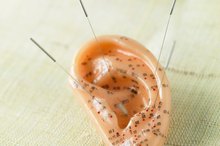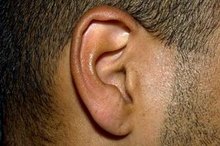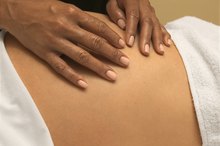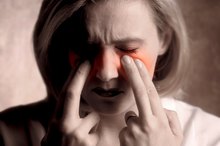Acupressure Treatment for Eye Twitches
Acupressure is a form of Chinese medicine that uses pressure, rather than needles, to stimulate specific points on the body. An acupressure session can provide muscle relaxation, while also potentially alleviating certain symptoms. Eye or muscle twitching and spasms respond to acupressure and acupuncture treatments. Your practitioner might choose points close to or far from the affected area to help relieve muscle contractions. Talk to your doctor about your condition before trying acupressure.
Types of Eye Spasms
The three most common types of twitches include a minor twitch, essential blepharospasm and hemifacial spasm, according to the University of Michigan Kellogg Eye Center 1. The minor twitch is temporary and often painless, involving the upper or lower eyelid. Caused by abnormal nerve impulses, an essential belpharospasm is rare but potentially debilitating because it can include muscles in the face and neck. Eyelid twitching accompanied by spasms in one half of the facial muscles is considered a hemifacial spasm. This condition often stems from compression of or damage to a facial nerve, and might take a few months to resolve. Acupressure points for each type are typically the same. However, the amount of sessions per week might differ depending on the severity of your condition.
- The three most common types of twitches include a minor twitch, essential blepharospasm and hemifacial spasm, according to the University of Michigan Kellogg Eye Center 1.
- Caused by abnormal nerve impulses, an essential belpharospasm is rare but potentially debilitating because it can include muscles in the face and neck.
Eye Twitching in Chinese Medicine Theory
Acupuncture Treatment for a Hemifacial Spasm
Learn More
Traditional Chinese medicine is based on the natural elements and rhythms of the earth. As part of the natural world, the human body has processes and conditions that can mimic natural elements such as heat and cold -- think fever and chills. Twitching and muscle spasms, especially those that move around or come and go, are are akin to "wind" in Chinese medicine theory. Wind can lead to congested energy, qi, that isn't able to circulate properly, according to TCM theory. Called qi stagnation, this phenomenon can lead to muscle weakness and contraction.
- Traditional Chinese medicine is based on the natural elements and rhythms of the earth.
- Twitching and muscle spasms, especially those that move around or come and go, are are akin to "wind" in Chinese medicine theory.
Acupressure Points
Your practitioner might press gallbladder point 14 and extra point yuyao to help alleviate eyelid twitching. Yuyao is found at the midpoint of the eyebrow, while gallbladder 14 is approximately one inch above it. Stomach points 2 and 3 -- located in line with the pupil, below the eye -- are also indicated for eye muscle spasms. In 2002, "Medical Acupuncture" published a study that also used small intestine point 18, yin tang and triple warmer 22 to treat eyelid spasms. Small intestine 18 is found below the outside of the eye on the cheekbone, yin tang is directly between the eyebrows and triple warmer 22 resides below the temple. Distal points such as large intestine 3, on the other hand, can also relieve eye muscle twitching.
- Your practitioner might press gallbladder point 14 and extra point yuyao to help alleviate eyelid twitching.
- Stomach points 2 and 3 -- located in line with the pupil, below the eye -- are also indicated for eye muscle spasms.
Supporting Research
Acupuncture for Clogged Ears
Learn More
Research to support the use of acupressure in eye muscle spasm is limited. Acupuncture, as evidenced in the above-mentioned study, can help with difficult cases of blepharospasm, or eyelid twitching. Stimulating effective points with fingers or a massage tool can still elicit a positive response. Talk to a doctor and a licensed Chinese medicine practitioner about which type of therapy is best for your condition.
- Research to support the use of acupressure in eye muscle spasm is limited.
- Talk to a doctor and a licensed Chinese medicine practitioner about which type of therapy is best for your condition.
Related Articles
References
- University of Michigan's Kellog Eye Center: Eyelid Spasms
- TCM.Health-info.org; Main Senses -- Eyelid Twitch
- Edinburgh Natural Health Centre; Qi Deficiency; J. Clogstoun-Willmott
- "A Manual of Acupuncture"; P. Deadman, et al.; 2001
- U.S. National Library of Medicine. MedlinePlus. Eyelid twitch. Reviewed August 28, 2018.
- American Academy of Ophthalmology. What Is an Eyelid Spasm or Twitching Eyelid? Reviewed September 10, 2019.
- American Academy of Ophthalmology. Eyelid Spasm and Twitching Treatment. Reviewed September 10, 2019.
Writer Bio
Christy Callahan has been researching and writing in the integrative health care field for over five years, focusing on neuro-endocrinology. She has a Bachelor of Science degree in biology, earned credits toward a licensure in traditional Chinese medicine and is a certified Pilates and sport yoga instructor.








